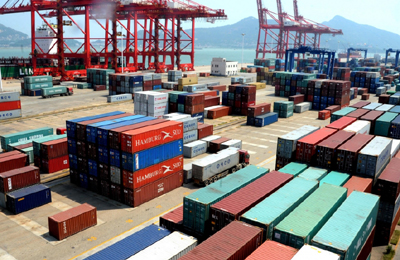
Mena ‘dynamic but volatile’ for logistics investors
London, March 18, 2014
From Dubai to Beirut, Saudi Arabia to Tunisia, Syria to Oman, the Middle East and North Africa region is dynamic but very volatile for investors in transportation and logistics, said an expert.
Thomas Cullen, the author of Transport Intelligence’s ‘Middle East and North Africa Transport and Logistics 2014’ report, said: “The bad news often obscures the good, but the opportunities for logistics providers in the region are even greater than its difficulties.”
The report offers detailed analysis of the region and the countries with often conflicting economics within it. Cullen has developed a framework for analysis, which divides the region into three diverse categories – growth zone, money zone and war zone.
The 'growth-zone' compares political and economic stability, low-medium GDP per head, and young or growing population giving potential for growth through outsourced industrial operations. This includes countries such as Jordan and Morocco.
The 'money-zone' includes smaller populations with high revenue streams but low capital assets outside oil and gas and includes countries such as Qatar, UAE, Saudi Arabia and others in the Gulf.
The ‘war-zone' considers a level of political instability inhibits economic growth through social unrest, wars, corruption or mismanagement. This includes Libya, Syria, Iran and Iraq.
This framework allows the risks and opportunities for investors in transportation and logistics to be methodically reviewed and assessed.
The region is hugely exciting in its potential for logistics growth. Dubai has been successful in its ability to restructure the global airfreight market around key hubs in the region, said the report.
The Gulf in general is now a key player in air transport due to the smaller states investing heavily in new aircraft and airports. Sea freight and container freight is being used in a revolutionary way beyond just trans-shipment.
A number of developments in both North Africa and Saudi Arabia have attempted to grasp the opportunity that a container port offers to gain entry to global supply chains. Saudi Arabia is trying to build large developments on both the Red Sea and Gulf coasts that will utilise the country's gas resources to develop energy intensive business such as down-stream chemical and plastics production oraluminium fabrication for automotive assembly.
The region, however, is lagging in terms of other aspects of logistics such as road and rail freight. North Africa has a road network of variable quality with the region also suffering from inadequate rail freight, despite the potential new projects on the Arabian peninsula.
The result of this is the poor development of logistics services such as contract logistics. The situation varies greatly between Dubai and other economies; the provision of logistics for consumer goods, in key markets such as Egypt, is meagre.
The report’s analysis implies a growth for contract logistics across the region of more than seven per cent this year, but this disguises major qualitative changes in the market.
The demand for production-orientated logistics is likely to grow at an enormous rate, it said. Similarly the latent demand for logistics in the retail sector is substantial, with market dysfunction retarding growth. Better roads and a recognition by governments of the importance of logistics suggests that markets may open up to the possibility of a much deeper presence by global LSPs as well as the more sophisticated local players, said the report.
The oil and gas sector remains dominant in the region’s economics, with the direct impact of these resources having an enormous effect on the logistics markets.
It also has the indirect effect of driving demand for air services in many locations and is the force behind the development of the growth of the chemical sector in these economies. The effect is to skew logistics provision towards heavy industrial, capital intensive operations.
The other major characteristic of the Mena region is its political instability which many investors see as an impenetrable barrier to growth.
The instability conceals substantial opportunities. Many of the region's largest economies are struggling to emerge from dysfunctional economies characterised by corruption, weak institutions and barriers to entry which make logistics markets less than rational. - TradeArabia News Service







